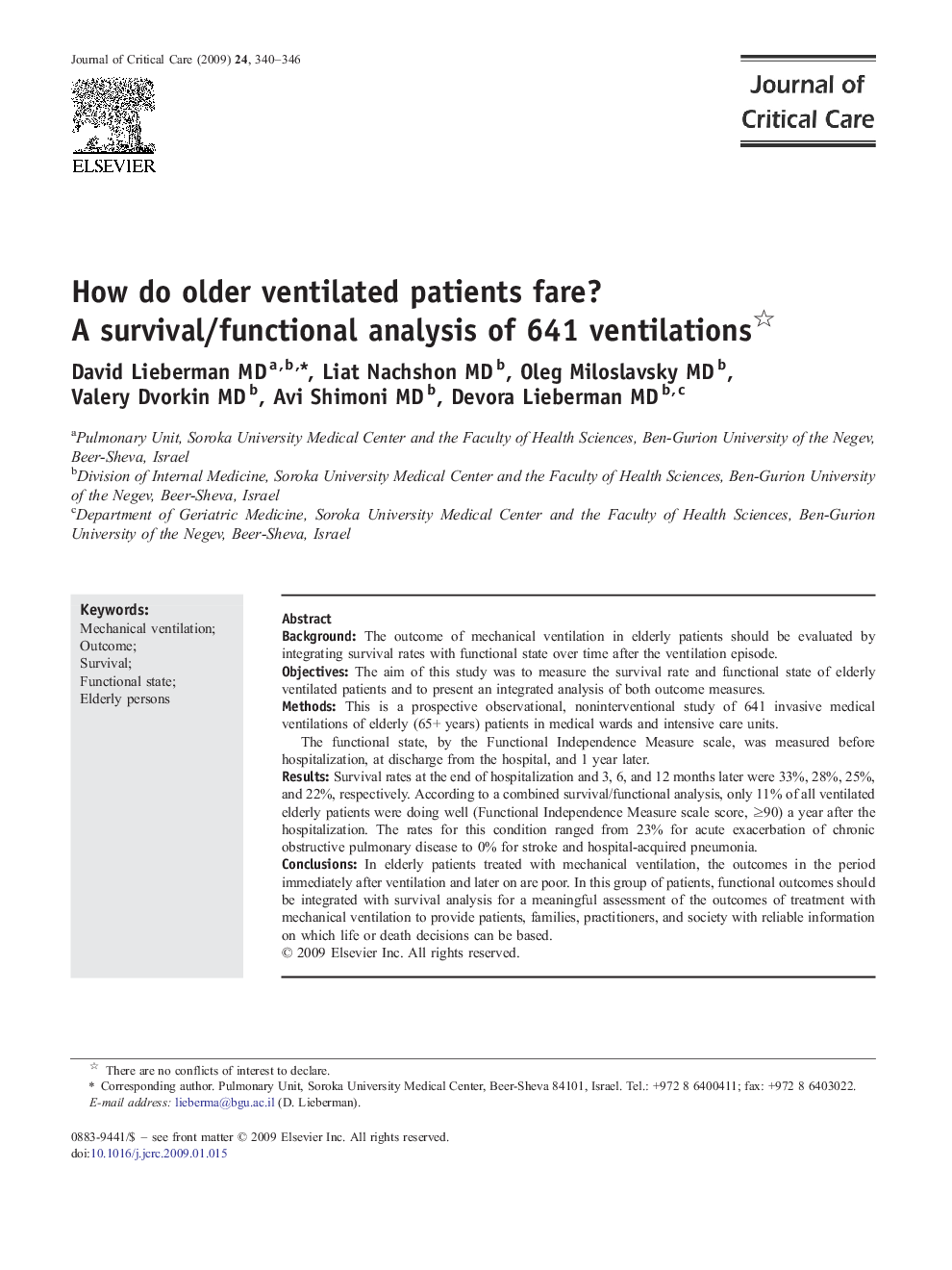| Article ID | Journal | Published Year | Pages | File Type |
|---|---|---|---|---|
| 2764701 | Journal of Critical Care | 2009 | 7 Pages |
BackgroundThe outcome of mechanical ventilation in elderly patients should be evaluated by integrating survival rates with functional state over time after the ventilation episode.ObjectivesThe aim of this study was to measure the survival rate and functional state of elderly ventilated patients and to present an integrated analysis of both outcome measures.MethodsThis is a prospective observational, noninterventional study of 641 invasive medical ventilations of elderly (65+ years) patients in medical wards and intensive care units.The functional state, by the Functional Independence Measure scale, was measured before hospitalization, at discharge from the hospital, and 1 year later.ResultsSurvival rates at the end of hospitalization and 3, 6, and 12 months later were 33%, 28%, 25%, and 22%, respectively. According to a combined survival/functional analysis, only 11% of all ventilated elderly patients were doing well (Functional Independence Measure scale score, ≥90) a year after the hospitalization. The rates for this condition ranged from 23% for acute exacerbation of chronic obstructive pulmonary disease to 0% for stroke and hospital-acquired pneumonia.ConclusionsIn elderly patients treated with mechanical ventilation, the outcomes in the period immediately after ventilation and later on are poor. In this group of patients, functional outcomes should be integrated with survival analysis for a meaningful assessment of the outcomes of treatment with mechanical ventilation to provide patients, families, practitioners, and society with reliable information on which life or death decisions can be based.
